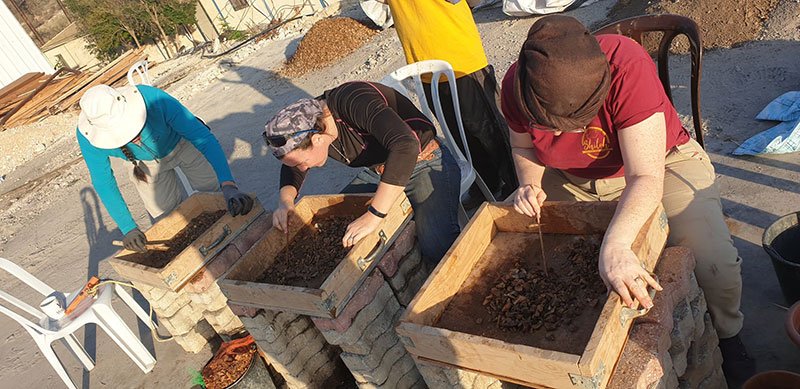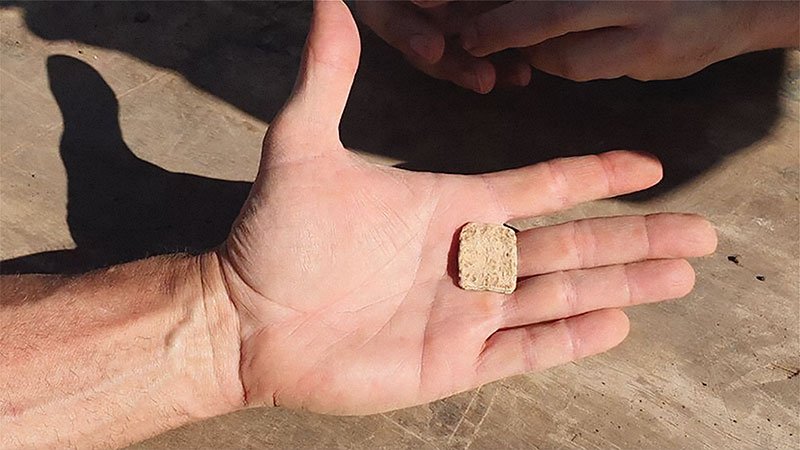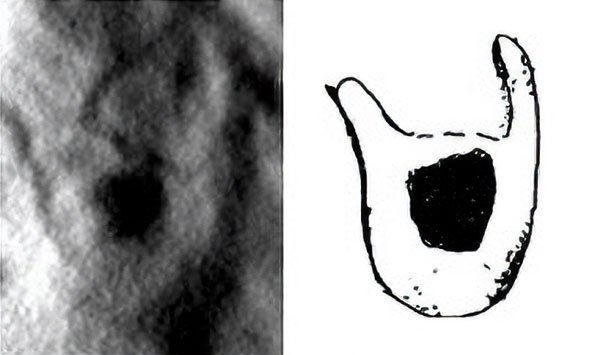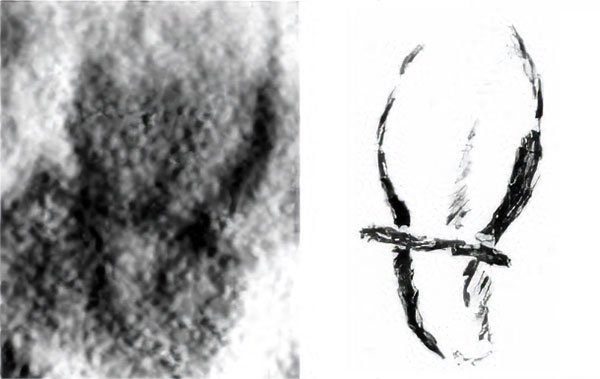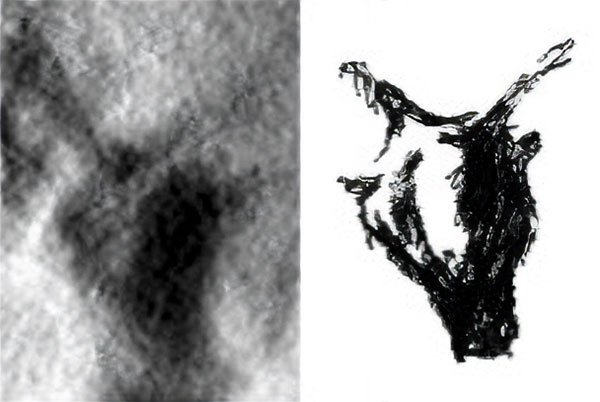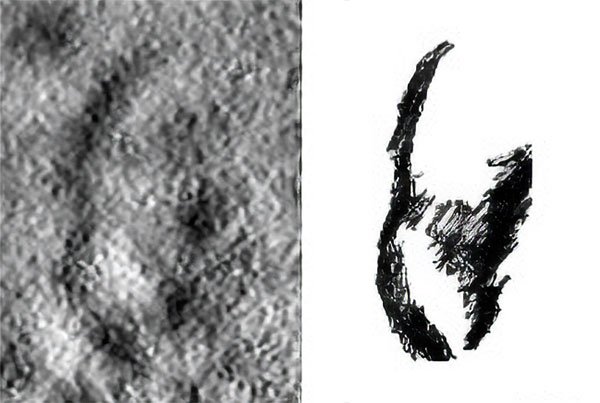Discovery of an Ancient Curse Tablet
How did the discovery of an ancient curse tablet confirm the biblical timeline?
Just before his death, Moses instructed six tribes of Israel to stand on Mount Ebal “for the curse” after they entered Canaan (Deuteronomy 27:13). The Levitical priests would then loudly declare divine curses upon violators of the law of Moses (Deuteronomy 27:14–26, 28:15–68). The other six tribes would stand on Mount Gerizim “to bless the people” who would obey God’s law (Deuteronomy 27:12, 28:1–14). After each proclamation, the opposite side would call out, “Amen.” This ceremony is recorded in Joshua 8:30–35.
The notion of a curse may sound strange to modern ears, but the concept is found throughout the Bible. It first appears in the fall account, whereby the Lord pronounces a curse upon the serpent and creation (Genesis 3:14, 17; Romans 8:18–23).1 Cain was cursed because he committed murder (Genesis 4:11). Later, Joshua pronounced a curse on anyone who would rebuild Jericho (Joshua 6:26). To be cursed is to be exiled and separated from God’s goodness and favor, to be under his divine displeasure and wrath.
The Old Testament, with its references to curses and building altars, might seem distant and unrelatable to us. But these descriptions offer details that can help biblical archaeologists connect their discoveries with Scripture, pointing to the historicity of the biblical record. The artifacts provide a fascinating backdrop for making the Bible’s accounts more vibrant for readers—and sometimes providing the greatest extra-biblical evidence for defending Scripture’s accuracy.
However, even with evidence pointing to biblical reliability, scholars often find ways to dismiss the truth to continue believing their false paradigms regarding the history of Scripture. But recently a team with Associates for Biblical Research (ABR) uncovered an artifact which would make the scholarly community reconsider the foundation of their teachings on the early books of the Old Testament.
The Altar
In 1980, Israeli archaeologist Adam Zertal discovered an archaeological site on the northeastern slope of Mount Ebal, excavating there from 1982 to 1989. He found a 3.5-acre foot-shaped enclosure. Several foot-shaped archaeological sites have been found in the Jordan Valley, very possibly built by the Israelites to symbolically establish their ownership of the land. Within the enclosure was a rectangular structure about 9 x 7 meters (29.5 x 23 feet). The structure included a ramp and was surrounded by small courtyards. In and around the structure, Zertal’s team found important artifacts: remnants of a typical Israelite four-room house; broken pottery; jewelry made of gold, silver, and bronze; Egyptian scarabs; a pumice chalice; ash; and animal bones. Zertal concluded it was a sacrificial complex with an altar that had been in use for about 100 years or so.
Secular scholars believe the book of Joshua originated hundreds of years after the events described in Joshua, possibly in the days of Josiah. However, much to his secular peers’ chagrin, Zertal associated the complex with the altar recorded in Joshua 8:30–31.2 In this passage we learn that after the Israelites defeated Ai in battle, the Lord instructed Joshua to build an altar on Mount Ebal, made of “uncut stones, upon which no man has wielded an iron tool.”
Zertal also discovered that the large altar had been built directly over an earlier but much smaller round altar 2 meters (6.5 feet) in diameter. The altar was made of uncut stones, leveled on bedrock, and built below the perfect geometric center of the large altar. Zertal surmised that the Israelites constructed the large altar over the round one to commemorate and preserve Joshua’s original altar. Over the course of about 100 years, the Israelites offered sacrifices at the larger altar and then stopped using it, covering it with debris. The smaller altar appears to have been in use at the time of Joshua and could very well be the one recorded in chapter 8. Zertal believed that one generation separated the construction of the altars, but further analysis demonstrates it was likely several generations. In 1987, Zertal published a preliminary report on his work,3 but he died before completing a final report.
Wet sifting
Wet sifting is labor-intensive and costly, not to mention available water is often scarce on dig sites. Perhaps this is why many archaeologists resist using this technique. However, ABR has been on the forefront of this technology in Israel and has used wet sifting with remarkable success. In fact, since 2018 at their Shiloh dig site, the ABR team has wet sifted almost 100% of excavated material.14 The process is rewarding. At the Shiloh excavation, archaeologists have discovered five scarabs for every one scarab discovered by previous expeditions that did not employ wet sifting.
The rinsing station located near the Mount Ebal site consists of a plastic water tank with the top cut off. The tank is fitted with a pump and hoses that allow workers to rinse the dirt and recycle the water.
As Stripling’s team discovered, there’s no telling what bits of ancient history might come out in the wash.
The Rest of the Story
Fast forward to 2019 when ABR archaeologists Dr. Scott Stripling and Abigail Leavitt set out to thoroughly reexamine the evidence unearthed by Zertal.4
Mount Ebal lies in the politically sensitive and often dangerous West Bank, which is divided into three parts under different authorities. The area in which Zertal had excavated was under Israeli military control and Palestinian civil control. An international treaty prohibits new excavations, but ABR procured the proper permissions to resift the material Zertal had already excavated.
Like good archaeologists, Stripling and Leavitt understood the value of garbage. They knew that previously excavated material can be resifted and reanalyzed. In December of 2019, ABR relocated about 30% of Zertal’s dump piles (big mounds of excavated dirt) to a nearby community and set up a sifting station. There, the ABR team carefully re-examined the dirt with a process called wet sifting.
Wet sifting involves washing excavated material with water to remove dirt from small artifacts accidentally overlooked by the naked eye when dry sifted. As the ABR team sifted Zertal’s material, they found hundreds of missed artifacts, including 268 diagnostic pottery sherds, small metal tools, flint, and other objects. Without wet sifting, these artifacts would have been lost forever—including one discovery that, if ABR’s conclusions are correct, is nothing short of earth shattering.
On December 18, 2019, Frankie Snyder spotted a flat object in her wet-sifting tray.5 An expert on small archaeological finds, she immediately knew by its unusual weight that the 2 x 2 cm (.78 x .78 in), square object was made of lead. A crease on three of its edges indicated that it had been folded. The team quickly identified the object as a curse tablet.
In the ancient world, scribes would write a curse against a person or group with an iron stylus on a lead tablet (Job 19:24). While the lead was still soft, it was folded shut before it hardened. The act of closing the tablet made the curse permanent.
Lead curse tablets from the Greco-Roman era are quite common, but Stripling surmised this tablet might be much older because of the date range of the pottery and scarabs found with it at the altar site. Could this tablet be from the time of the Judges or even Joshua?
To confirm that this was a curse tablet,6 the team would have to determine if there was an inscription and then hope to decipher it. But when Stripling’s team put a bit of pressure on the tablet, a corner broke off. Opening the tablet without destroying it was impossible. They would have to find another way to look inside.
At the end of 2019, with the tablet safely in storage, the team returned to the US assuming they would resume their study in a few months. But after the COVID-19 pandemic shut down the world in 2020, the team couldn’t return to Israel.
Undeterred, Stripling worked with an Israeli colleague to courier the tablet to Prague, where researchers at the Czech Academy of Sciences would perform X-ray tomographic measurements (XCT) on the tablet to determine if there was an inscription inside. An XCT takes thousands of scans, each one peering microscopically deeper, and then puts those scans together so that a potential inscription can be deciphered.7 Because the Czech team had extensive experience scanning lead tablets from later historical periods, they knew exactly what to look for.
What they found was revolutionary.
Opening the Tablet
In the early hours one morning in February 2022, Stripling opened an email to find the first images from inside the tablet. Immediately, he recognized the symbol of an ox head, the precursor to the first letter in the Hebrew alphabet, ’aleph. Another symbol looked like a standing stick figure with upraised arms, the precursor to the Hebrew letter he.
Daniela Urbanova, a Latin epigrapher on the Czech team, had also recognized ancient writing in the scans. Stripling subsequently invited two additional specialists with expertise in West Semitic languages to conduct further examinations of the scans and to make plans for an in-depth academic article.8
The team recognized the text as proto-alphabetic script, known to be in use between 1750 and 1200 BC. Similar inscriptions have been discovered in the Sinai and in Israel. Scholars have long recognized the proto-alphabetic script as the predecessor to the Semitic alphabet (Canaanite, Hebrew, Phoenician).
In this type of early writing, the letters could be read vertically, horizontally, to the left, or to the right. The team eventually agreed the text seemed to be written in a chiasm, a parallel literary device used frequently in the Psalms.
The text from inside the tablet began to coalesce with the following words:
- A. You are cursed by the god YHW—cursed.
- B. You will die,
- C. Cursed –
- C’. Cursed,
- B’. You will surely die.
- B. You will die,
- A’. Cursed you are by YHW—cursed.
Inscriptions with the name Yahweh (YHW is a shortened form) had been previously discovered in Egypt, the Sinai,9 and Moab.10 But this one was found in a context that is distinctively Israelite, on the mountain of the curse and in an altar complex consistent with Joshua 8. Based on the script and subsequent analysis of the pottery and scarabs, the writing on the curse tablet likely dates to Late Bronze Age IIA (ca. 1400–1300).
Far from drawing hasty conclusions, Stripling involved various experts from several Israeli universities to conduct metallurgy testing, ceramic analysis, and carbon dating. Since the pottery from the dump pile dated to the Iron Age I and Late Bronze Age, they logically concluded that the tablet was created within those early time periods.11 Furthermore, scientific analysis concluded that the lead came from a mine in Greece known to be in use during the Late Bronze Age.12 All this evidence points to the fact that the writing is likely from 1400 to 1300 BC.13
Addressing the Critics
A number of criticisms have been raised about the discovery of the tablet and ABR’s interpretation of the find. Listed here are a few of the most common criticisms with a brief response.
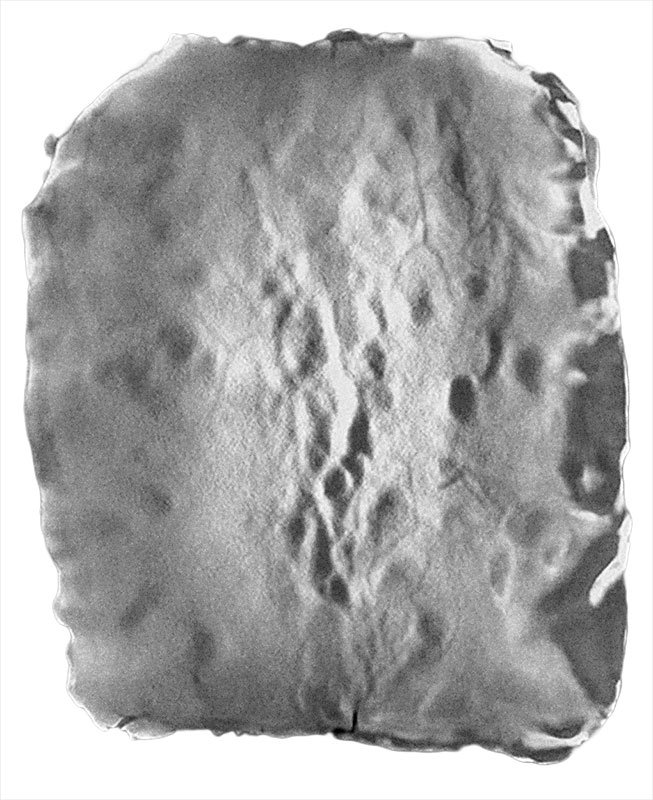
By being removed from the excavation site, the dump material lost its archaeological context.
Finding any archaeological artifact in context is most ideal. In this instance, we have extensive documentation by Israeli archaeologist Adam Zertal that the material from the altar itself was dumped in the east dump pile, where the tablet was found. Moreover, the pottery and scarabs found there severely limit the date range for the tablet which we estimate to be Late Bronze Age IIA (ca. 1400–1300). Lastly, proto-alphabetic script was not used in later periods, further limiting the possible date range for the tablet. Many archaeological artifacts have been found out of context and have even appeared on the antiquities market but have been deemed genuine.
Stripling released the info to popular media before the academic article was peer reviewed.
This is not uncommon. One of our concerns was that the images had been emailed to numerous scholars for preliminary analysis. While we tried to limit this distribution, there was a risk of academic piracy. As stewards over the discovery, we felt it was our responsibility to present the discovery to the public and then publish the academic article(s).
The letters are so garbled that some people doubt the artifact contains letters at all.
From the very beginning, Stripling acknowledged that others would propose alternative readings of the script. This happens regularly with inscriptions. However, claims that there is no script at all are dubious at best. Although it is true that proto-alphabetic script was often written in different directions, this tablet was never intended to be read by anyone after it was closed. But even the untrained eye can see some of the lettering proposed.
Stripling has not given an explanation for how his team is deciphering the letters.
The extensive rationale is provided in the academic article and episodes of Digging for Truth TV15 and the Digging for Truth podcast.
The Importance of the Tablet
Gershon Galil, professor of biblical studies and ancient history at the University of Haifa, called this “the most important inscription ever found in Israel.” It’s certainly ABR’s greatest discovery in over 50 years of ministry. But more than a fascinating ancient relic, the implications are massive for affirming the accuracy of God’s Word.
The combination of El (God) and the sacred name YHW challenges theories about the authorship of the Torah.
Critical scholars deny that the Torah was written by Moses in the fifteenth century BC. Instead, they often assert it was compiled across later periods by authors who worshipped different gods, El/Elohim and YHWH.
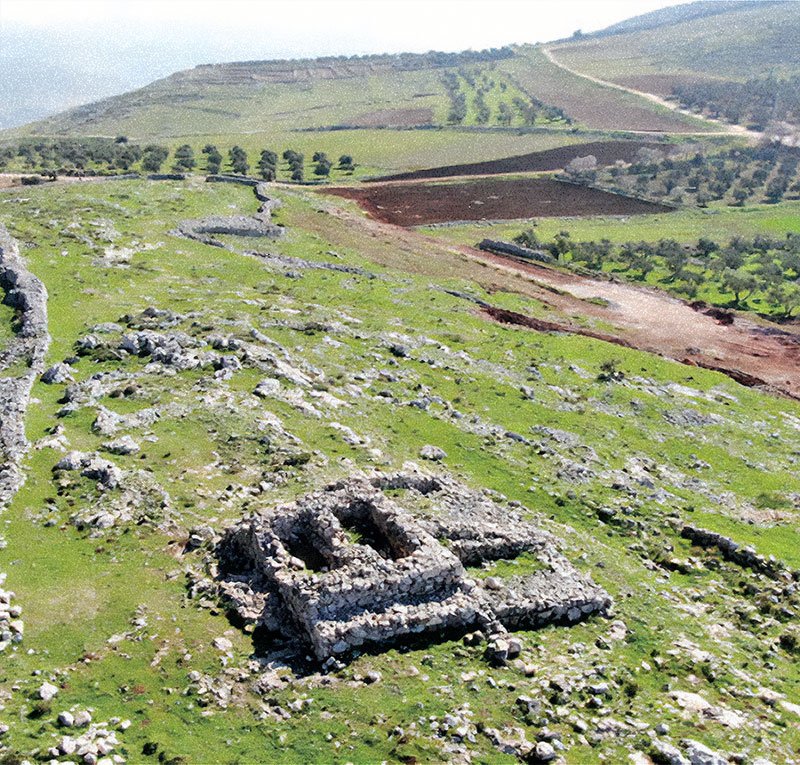
For example, these scholars have claimed that different authors used these separate designations for God in the first five books of the Bible. A very common argument is that in Genesis 1 the author uses El (God) but in Genesis 2 the author uses YWH. Scholars say these different uses prove that Genesis 1 and 2 are separate documents written centuries apart—and not by Moses. Some Christian scholars argue that Moses possibly used El in chapter 1 to represent God’s creative power and used YHW in Genesis 2 as his personal name since he is dealing intimately with Adam and Eve. Just as Moses did in Genesis 1 and 2, the curse tablet uses these words together, dating to around 1400 BC.
Scholars also claim that Moses and Joshua would have had no alphabet to write with. Scripture, however, teaches that these leaders wrote records for people to read and to teach to their children. In fact, Joshua 8:30–35 records that, after the curse ceremony, Joshua “read all the words of the law. . . . There was not a word of all that Moses commanded that Joshua did not read before all the assembly of Israel.”
If this reading of the tablet is correct, the appearance of YHW (the God of the Israelites) indicates that the inscription was written by Israelites, making it the most ancient Hebrew writing ever found. This indicates that when they entered the Holy Land, at least some Israelites were literate, much earlier than commonly believed. The timeline set by the curse tablet points to the truth that not only did Moses write the Pentateuch, he wrote it as an eyewitness to the events leading up to the conquest.
But more telling than the timeline indicated by the curse tablet are Christ’s words in John 5:46: “[Moses] wrote of me.” The implications for concluding that Moses and Joshua were not literate are significant indeed—contradicting Christ himself.
Paradigms control and even dominate the way scholars evaluate evidence. When a paradigm becomes accepted, it’s hard to shake, even when evidence shows up to contradict it. Understandably, scholars are hesitant to accept the veracity of the curse tablet. Since their erroneous belief in the current timeline, which places the conquest in the thirteenth century or denies it altogether, provides the bedrock upon which their other beliefs are built, they would be forced to rethink many of their suppositions.
This tiny, closed tablet opens the door for scholars to reconsider their former conclusions about Scripture and the time of its origin. When carefully interpreted, the archaeological remains discovered on Mount Ebal harmonize perfectly with the biblical record. The correlations are extraordinary, reminding us once more that we can trust the entire Word of God, from the first verse of Genesis to the final verse of Revelation.
Undoing the Curse
People have been questioning and modifying God’s Word since Satan tempted Eve to doubt by asking, “Did God really say. . . ?” Yet time after time, we’ve discovered evidence that points back to the veracity of Scripture and its importance to the gospel. The curse tablet is no exception.
The bearers of curse tablets called for God to curse those who did wickedness. But they also knew that while the Lord is terrible in his judgment, his mercy is even greater.
God’s curse would have been irrevocable if not for the work of Jesus. Indeed, “Christ redeemed us from the curse of the law by becoming a curse for us—for it is written, ‘Cursed is everyone who is hanged on a tree’” (Galatians 3:13). We can be thankful for the infallible Word of God which tells us how to live not under the curse of the law but freely in grace.
Editor’s note: Originally published as “Cursed”
Answers Magazine
April–June 2024
When we deny the existence of a literal Adam, we undermine the very authority of Scripture.
Browse IssueFootnotes
- Henry B. Smith Jr., “Cosmic Death in Romans 8: Affirming a Recent Creation,” Bible and Spade 26, no. 1 (Winter 2013): 8–14.
- For more of Zertal’s story, see Carl Holston, “Adam Zertal and the Manasseh Hill Country Survey,” Bible and Spade 36, no. 2 (Spring 2023): 10–15.
- Adam Zertal, “An Early Iron Age Cultic Site on Mt. Ebal. Excavation Seasons 1982–1987,” Journal of the Institute of Archaeology of Tel Aviv University 14, no. 2 (1987): 105–165.
- Abigail Leavitt, The El-Burnat (A) Structure(s). Joshua’s Altar? (Katy, TX: Nehemiah Press, 2022).
- You can read her account in Frankie Snyder, “The Discovery of a Lifetime: The Mount Ebal Curse Tablet,” Bible and Spade 36, no. 2 (Spring 2023): 21–23.
- Some scholars have claimed that the lead object is a fishing weight. An academic article interacting with this problematic argument is in the works. Readers can hear Stripling’s response to this and other objections on the Digging for Truth podcast: https://podcasts.apple.com/us/podcast/40-is-the-mt-ebal-curse-tablet-a-fishing-weight/id1648680031?i=1000640730730.
- One such image can be seen at You Are Cursed by the God Yahweh (fig. 3), Springer Open, https://heritagesciencejournal.springeropen.com/articles/10.1186/s40494-023-00920-9/figures/3.
- S. Stripling, et al., “‘You Are Cursed by the God YHW:’ An Early Hebrew Inscription from Mt. Ebal,” Heritage Science 11, no. 105 (2023): https://doi.org/10.1186/s40494-023-00920-9. For a more popular level article, see Scott Stripling, Abigail Leavitt, and Pieter Gert van der Veen, “A Tsunami from Mt. Ebal: Cursed by the God Yahu,” Bible and Spade 36, no. 2 (Spring 2023): 4–9.
- Stripling, et. al., “‘You are Cursed by the God YHW,’” 16–17.
- Bryant G. Wood, “Mesha, King of Moab,” Associates for Biblical Research, September 27, 2006, https://biblearchaeology.org/research/chronological-categories/divided-monarchy/3437-mesha-king-of-moab.
- Era labels, such as Iron Age and ice age, refer to a secular dating method with evolutionary undertones that those with a biblical worldview do not necessarily endorse. However, they are used within the literature to refer to broad ranges of time.
- Stripling, et. al., “‘You are Cursed by the God YHW,’” 3.
- The Conquest has been dated by Ussher and others at 1451 BC.
- Henry B. Smith Jr., “In the Shadow of Shiloh,” Answers 18, no. 3 (2023): 36–41.
- “Cursed! The Mount Ebal Curse Tablet,” Digging for Truth, episodes 1–4 (April 30–May 21, 2023), https://youtube.com/playlist?list=PLxGX6x_7lHL2KGGs-DcD7KoZA22D3gYMh&feature=shared.

Answers in Genesis is an apologetics ministry, dedicated to helping Christians defend their faith and proclaim the good news of Jesus Christ.
- Customer Service 800.778.3390
- Available Monday–Friday | 9 AM–5 PM ET
- © 2025 Answers in Genesis



